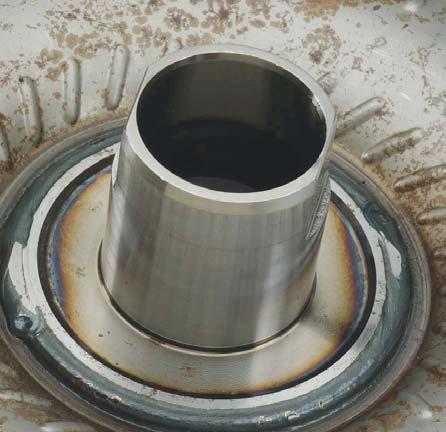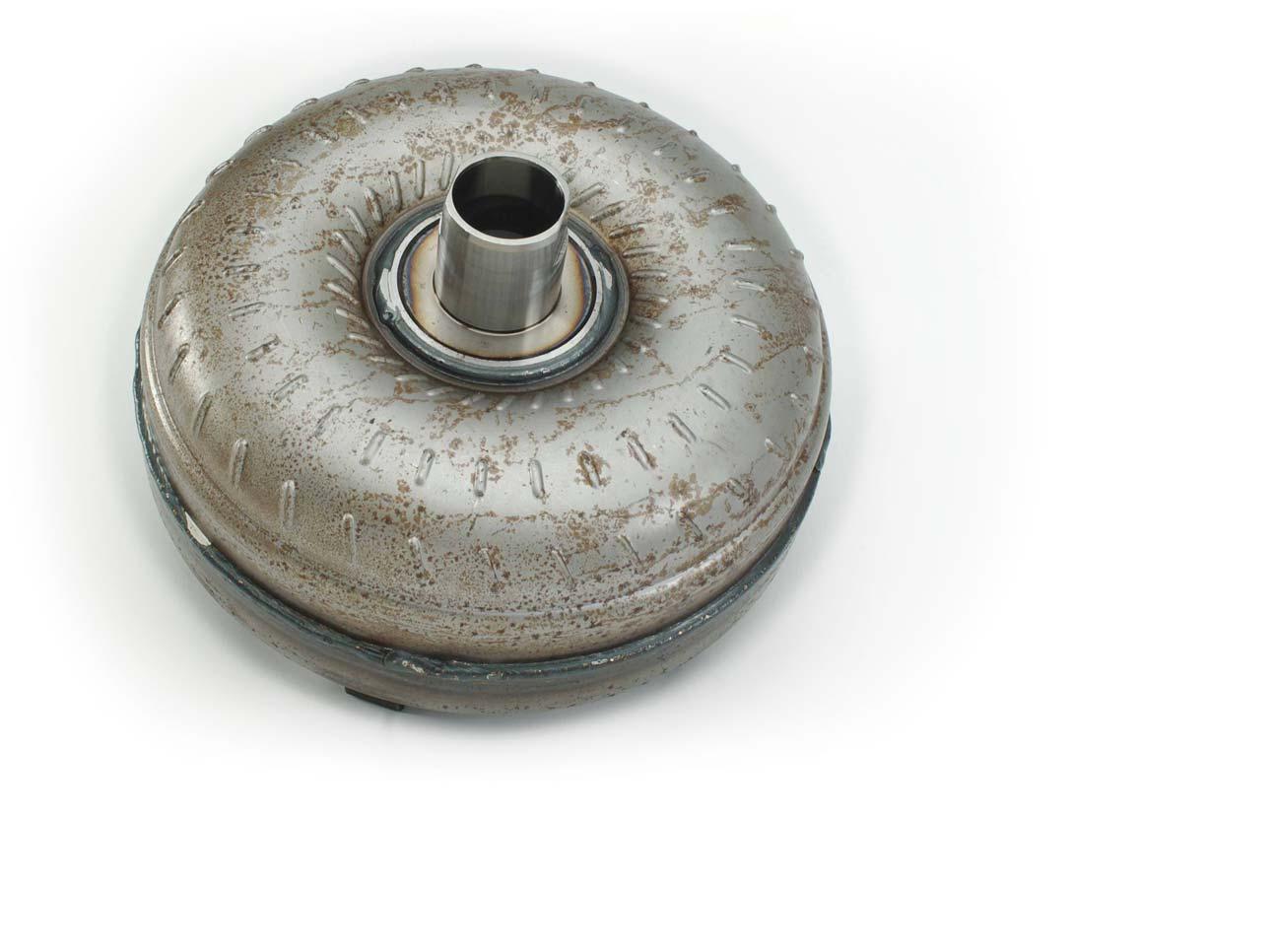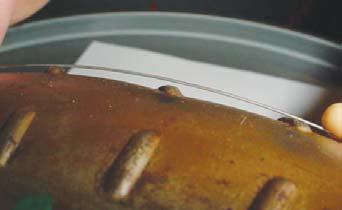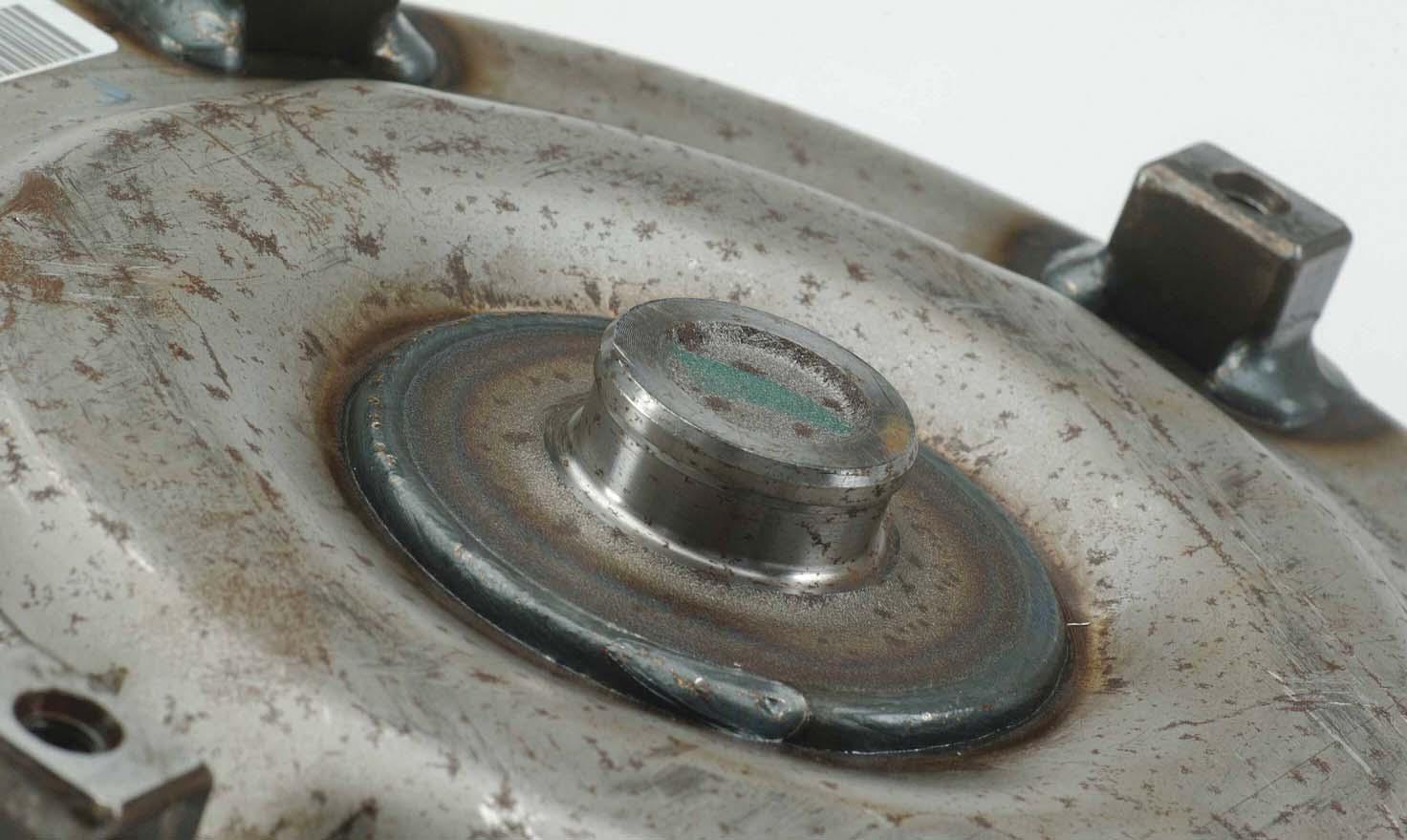
2 minute read
Torque Converter
B. Converter Stator (Inside Converter)
A. Converter Exterior
C. Converter
Hub

A. Visually inspect the converter exterior for impact damage and signs of discoloration. The ribs on the back of the pump housing are used by the engine speed sensor to detect converter rotation. Replace the converter if any ribs are damaged or deformed. NOTE: Erratic speed sensor signals can be caused by a dented torque converter or deformed torque converter ribs. Inspect the converter carefully. Dents and deformities are sometimes hard to identify. The converter must not show signs of leakage when pressurized to 517 kPa (75 psi) and submerged in water. If bubbles appear during this test, the converter is leaking and must be replaced. NOTE: After pressure testing the torque converter, all air pressure must be exhausted from the converter before loosening the test fixture nut. B. Inspect the stator for proper locking and freewheeling action. The stator inner race should lock when rotated counterclockwise and rotate freely when rotated clockwise. Check the stator with the converter on its edge, and with the converter placed at a 45 degree angle, hub down. Replace the converter if the stator fails this inspection. Check converter endplay following Service Manual SM3191EN guidelines. Replace the converter if endplay exceeds 1.015 mm (0.040 inch).

Dented converter near rib creates erratic speed sensor signal.
(continued)
D. Converter
Pilot
C. Inspect the converter pump hub for deep scratches, scoring, nicks, burrs and signs of overheating. DO NOT ATTEMPT to clean up hub damage using crocus cloth or a soft stone. Polishing the hub will cause fluid leakage at seal areas. Minimum allowable pump diameter is 58.25mm (2.2933 inches). Minimum allowable distance between converter hub flats (the charging pump drive surface) is 51.816mm (2.040 inches). NOTE: Damage to the torque converter hub and/or the torque converter pilot may indicate an engine/transmission adaptation issue. Carefully inspect the engine/transmission installation when this type of damage exists. D. Inspect the converter cover pilot for impact damage, nicks, burrs, cracks and signs of discoloration. Replace the converter if damage or discoloration is excessive. Minimum allowable pilot diameter is 43.080mm (1.696 inches). E. Inspect for missing or damaged converter lugs. Inspect welds for cracks. Replace the converter if damage cannot be repaired using a soft stone or crocus cloth. Replace the converter if any lugs are missing. Replace the converter if lug threads are damaged and cannot be repaired.

E. Converter Lugs











